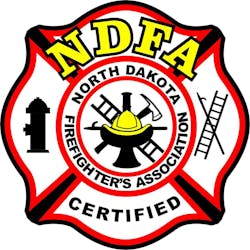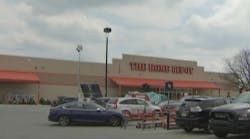Oct. 15--LARIMORE, ND-- For many rural fire departments in this region, recruiting and retaining volunteer firefighters is a difficult and continuing challenge, fire chiefs say.
The North Dakota Firefighter's Association has turned to a statewide media campaign to stir interest in a "job" which doesn't pay, but is a valuable community service.
"We're in a blitz right now -- TV, radio, newsprint -- trying to recruit," said Dale Trosen, NDFA president and former chief of the Larimore fire department.
The NDFA applied for and received a federal grant to launch the ad campaign to recruit and retain firefighters, said Rob Knuth, NDFA training director.
"This is basically new for us," said Knuth. "We're at the end of the first year of the four-year grant."
Rural fire departments are affected by the same demographic trends that plague rural communities in general -- fewer residents who, as a group, are increasingly older.
On top of that, many rural volunteer firefighters commute to work in larger communities, Trosen said. "They have to have an understanding boss who will let them leave."
"That's true in many towns. If they're young enough, they're working out-of-town," he said. "If they're old enough, they can't respond to every fire. When you're older, you can't overextend yourself."
Vastly volunteer
Ninety-six percent of fire departments in North Dakota are staffed with volunteers, said Trosen, who is an active Larimore firefighter.
Of the 30 volunteers who serve in his department, "a minimum of 15 of those work out of town," he said. That means half the force may not be available if a fire breaks out during their work schedules.
But "if it's a small fire, the guys in town can handle it, Trosen said.
In rural areas, the demands of seasonal farm work also reduce the number of available volunteers, said Wolfe Clark, the Fertile, Minn., fire chief.
"A lot of people drive truck this time of year," said Clark, who has a force of about 25 but also recruits through local newspaper ads. "Spring and fall are probably the worst."
In addition to the issue of manpower availability, changing attitudes may also affect the softening of interest in volunteer firefighting.
"Younger people are more used to immediate gratification," said Trosen, who's been a firefighter for 36 years.
"Even if it's volunteer and unpaid, you still have to train, you still have to make sure your equipment is working. ... Being a volunteer takes a lot more than people realize."
Adam Slettebak, fire chief in Petersburg, N.D. (pop. 192), agrees that recruitment is a challenge for small towns, but said his hometown is bucking the trend.
"We've rebounded," he said. "We've actually had a few more people in town who've become volunteers."
Membership is up to about 15 to 20, he said. Of those, "about 10 are really active."
The number of volunteers who respond to an event fluctuates, Slettebak said, but if a major fire breaks out, almost everyone "will drop what they're doing and help out."
Word-of-mouth advertising and knowing someone in the department influence volunteers to sign up, he said.
Mixed membership
Knuth estimates about 10,000 volunteer firefighters are members of 374 fires departments throughout the state. Of those 374, four departments are "fully career," meaning their members are salaried employees.
Nine departments are considered "combination," meaning that they have at least one career firefighter -- usually the department chief, Knuth said.
The Fargo Fire Department employs more than 100, he said. "Some departments have only 10 career firefighters and rely heavily on mutual aid (agreements with nearby fire departments)."
Each department sets it own requirements for membership, Knuth said.
Even the nature of fires today puts more pressure on firefighters, Trosen said.
"Thirty years ago, you could get to a fire and make a difference. We had more time," he said.
Now, when firefighters arrive on scene, the structure "may be pretty well engulfed, because of all the synthetic and plastic materials" that are used.
"It used to be a couch would be made of cotton or wool," Trosen said. "There's so much plastic now, which burns a lot faster."
Still, when fire strikes, many rural residents assume firefighters will arrive within minutes "because that's what they see on these TV shows," he said. "Even in Grand Forks, they can't even do that a lot of the time, and those guys are sitting there waiting for (the call)."
In rural areas, he said, "we do the best we can, but it isn't always as fast as you think it should be."
___ (c)2017 the Grand Forks Herald (Grand Forks, N.D.) Visit the Grand Forks Herald (Grand Forks, N.D.) at www.grandforksherald.com Distributed by Tribune Content Agency, LLC.






